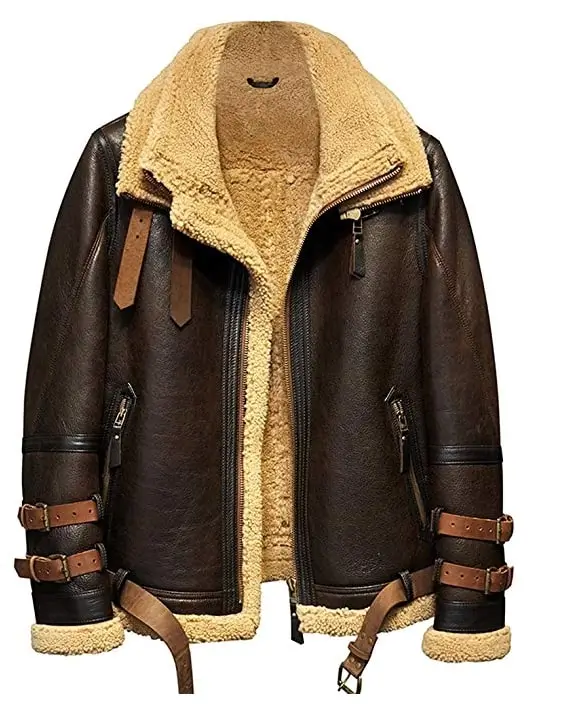Fashion is a dynamic and ever-changing form of expression aviator leather jacket that transcends mere clothing. It has long been a way for individuals to project their identities, align with cultural norms, and sometimes challenge societal expectations. From its origins in ancient societies to today’s global industry, fashion has always been a reflection of the times, mirroring shifts in politics, art, and technology. In this article, we’ll explore the evolution of fashion, its impact on society, and how it continues to adapt to modern demands.
Ancient Roots and Symbolismv
Fashion’s origins date back to ancient civilizations, where clothing was more than just functional; it symbolized status, beliefs, and community ties. In ancient Egypt, elaborate jewelry and linen garments distinguished the elite from commoners. In ancient Greece and Rome, fashion was a signifier of citizenship and social rank, with specific styles and materials reserved for different classes.
Throughout the Middle Ages, Europe saw fashion tied closely to social hierarchies, where the wealthy dressed in luxurious fabrics like silk and velvet, while the lower classes wore simpler garments. Sumptuary laws were even introduced to regulate what different classes could wear, reinforcing social divides. Fashion began to play a role in political and economic systems, setting the stage for the more individualistic styles that emerged in the Renaissance and beyond.
Fashion’s Revolution in the 20th Century
The 20th century brought rapid changes to the world of fashion, paralleling broader cultural shifts. The flapper dresses of the 1920s symbolized newfound freedoms for women, breaking away from the restrictive corsets and long skirts of earlier eras. This shift wasn’t just about style; it was a reflection of the changing roles of women in society, driven by their increased participation in the workforce and social reforms.
World War II had a significant impact on fashion, bringing practicality and resourcefulness to the forefront. Fabric shortages led to shorter hemlines and more minimalist designs, influencing trends even after the war ended. The 1950s, however, saw a return to glamour and sophistication with the rise of haute couture houses like Dior, which emphasized luxury and femininity in their designs.
The 1960s and 70s ushered in a wave of counterculture movements, leading to bold experimentation with color, patterns, and silhouettes. Fashion became a platform for youth to express rebellion against conservative norms. The rise of denim, tie-dye, and psychedelic prints reflected a desire for freedom and nonconformity, while punk fashion of the late 70s used ripped clothing and edgy accessories as a form of protest against the establishment.
The Rise of Digital Influence in Fashion
In recent decades, the fashion industry has been transformed by the digital age. The emergence of social media platforms like Instagram, TikTok, and Pinterest has shifted how trends are created and spread. Influencers, who once might have been considered everyday consumers, now have the power to shape what millions wear. This democratization of fashion has blurred the lines between high fashion and streetwear, bringing new styles and ideas to the forefront almost instantaneously.
Moreover, the rise of e-commerce has expanded access to fashion across the globe, making it easier than ever for consumers to purchase the latest trends. Brands must now operate in a world where fashion shows are live-streamed, and consumers expect immediate availability. This instant access has shifted the traditional fashion calendar, pushing designers to adapt with more frequent releases and capsule collections.
Sustainability and Inclusivity: The New Frontiers
As awareness of environmental and social issues grows, the fashion industry faces new challenges—and opportunities—to evolve. The environmental impact of “fast fashion,” characterized by rapidly produced and low-cost clothing, has become a major concern. Many consumers are turning to brands that prioritize sustainable practices, such as using organic or recycled materials, reducing waste, and ensuring fair labor practices.
In addition to sustainability, inclusivity has become a central theme in contemporary fashion. Today’s consumers expect brands to embrace diversity in their marketing, product ranges, and runway presentations. This shift has seen more emphasis on offering a wider range of sizes, as well as more representation of different ethnicities, body types, and gender expressions. By embracing inclusivity, the fashion industry is working to challenge outdated norms and create a space where everyone can see themselves represented.
Fashion’s Technological Future
Looking forward, technology is set to play an even more integral mens aviator jacket role in the fashion world. Innovations such as 3D printing, AI-assisted design, and augmented reality (AR) have already begun to change how clothing is designed, manufactured, and sold. Digital fashion, where virtual garments are created for online avatars or social media, is emerging as a new frontier, allowing for creativity without the environmental costs of physical production.
Virtual try-on technologies and AI styling assistants are reshaping the shopping experience, making it easier for consumers to find the perfect fit and style. Meanwhile, blockchain technology is being explored to ensure transparency and authenticity in fashion supply chains, helping combat issues like counterfeiting and unethical production practices.
Conclusion
Fashion is a constantly evolving art form that reflects the changing tides of society. From ancient robes that marked social status to the digital influencers shaping trends today, fashion has always been about more than just clothes—it’s a way for people to express their identities, values, and aspirations. As the industry navigates the challenges of sustainability and inclusivity while embracing new technologies, fashion will continue to inspire, provoke, and connect people across the world.







